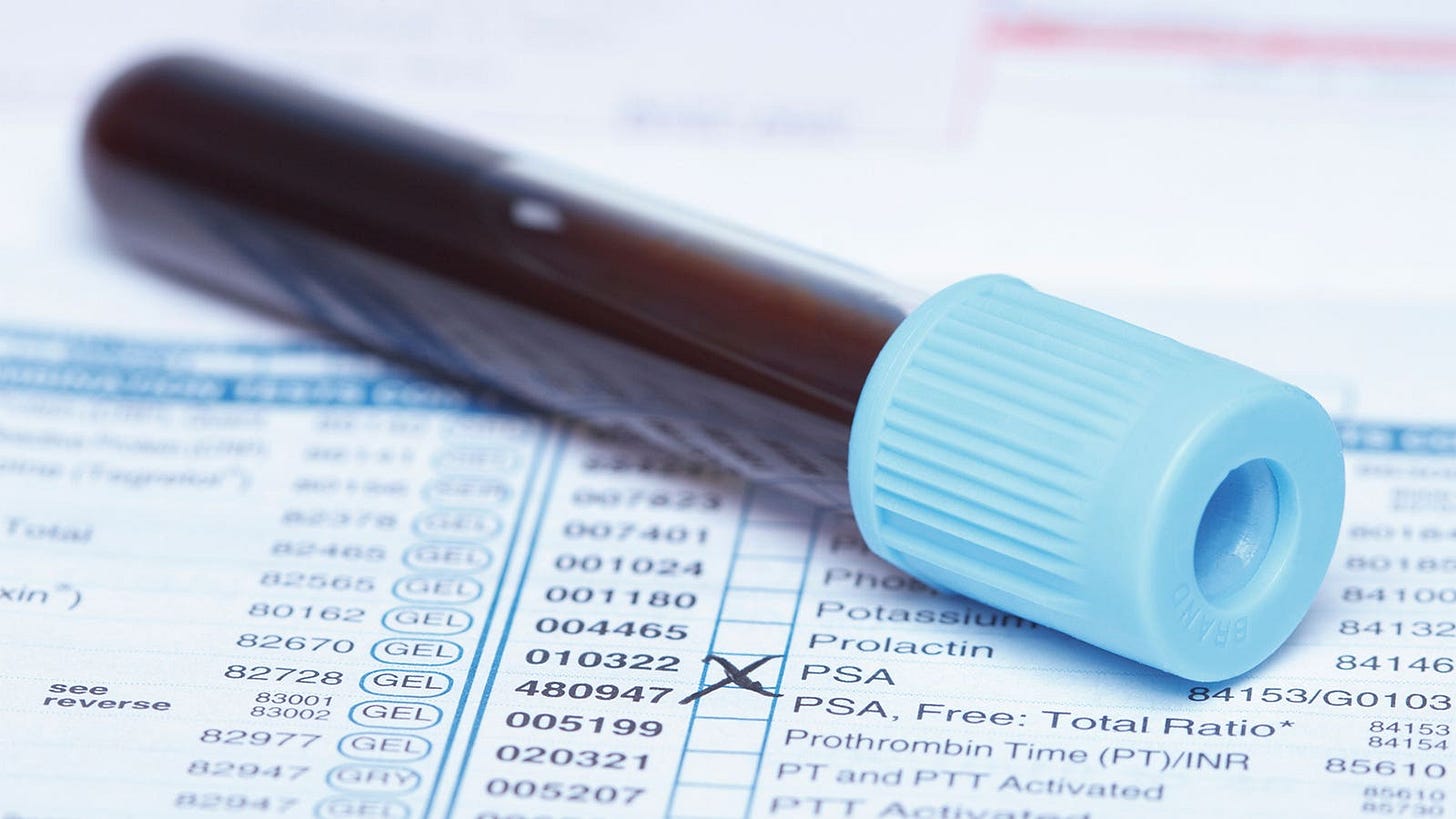My best 'pros mitzvah' gift?: Renaming Gleason 6 as noncancerous or precancerous
Better than a plush prostate doll. Change the Gleason 6 definition,
By Howard Wolinsky
More good news for me and my prostate. I have been feeling like Howie Sunshine lately. Mr. Upbeat 24/7/366.
I got my annual prostate cancer test.
Usually, it's great. But the results this year were better than great. The score dropped 25%, the lowest in five years. Outstanding.
My wife suggests—jokingly—it must be the green donuts was eating on St. Patrick’s Day.
Frankly, I have been a bit worried about the test based on the experience of some of my friends whose PSAs are on the rise.
I have spent the past 12 years dancing between the raindrops. I take an annual blood test and spend a few days semi-worried about what the results will bring.
In 2010, I opted not to be treated because research showed patients like me—I’ve had a single core of Gleason 6, less than 1% in the six biopsies I’ve had-- don't have to undergo surgery or radiation with this cancer known as Gleason 6. low-risk prostate cancer.
(When I started, only 6% of candidates for close monitoring with active surveillance (AS) opted for this path. But the movement has gained momentum, and now 60% of candidates in the U.S. go on AS. Still not good enough: 40% opt for aggressive treatment, putting them at risk for impotence and incontinence.)
Gleason 6 is known NOT to spread. So it’s safe to go untreated.
Back in 2010, a urologist tried to spook me into undergoing surgery. So I got a second opinion at the University of Chicago.
The doctor there said I was the "poster boy for active surveillance," an approach to tracking these cancers with the PSA blood test, digital rectal exams, biopsies, and lately, MRIs.
PSA (prostate-specific antigen) is a protein produced in the prostate. Mine had gone up a small amount year after year but finally settled at a lower level between 4.8 and 5.2 after reaching a high several years ago of nearly 9.
PSA can rise and usually do as you age
Some friends of mine on AS, who are careful with diet, religiously so, have seen their PSAs rise lately. (I am not so careful.) What they are experiencing is referred to as “anxious surveillance.”
So I was nervous as I went in for my annual PSA test. (I have a special kind of PSA testing known as the phi score, or prostate health index, which measures a couple of different flavors of PSA and puts it into a formula to yield a score. Not all doctors use phi.)
My score came in 25% lower than last year, almost at the level I was five years ago. My regular PSA was 4.51, again the lowest in five years.
There’s no explanation. Donut consumption makes as much sense as anything else.
My doctor said I could stay on active surveillance for another year and can skip an MRI, a biopsy, and a digital rectal exam that patients like me dislike so much. I haven’t had a biopsy in five years after having one annually for most of the previous seven years.
So I go into my pros mitzvah year —prostate bar mitzvah year (2023)—as an untreated active surveillor.
I wonder if I'll get a fountain pen, a traditional bar mitzvah gift. Or maybe I'll a gel pen? Even better, how about the plush prostate doll?
But really, as a pros mitzvah gift, I'm hoping for a re-definition of Gleason 6 "cancer" as a non-cancer.
I co-authored with some docs an article coming out Monday in a prominent medical journal (the Journal of Clinical Oncology) on this gidt.
Lead author Dr. Scott Eggener, my former urologist at UChicago, who put me on AS, called on doctors to redefine Gleason 6 "cancers" like mine as benign lesions--not scary cancers.
These re-definitions have happened before. But watch for the establishment to circle the wagons. Stay tuned.
More good news.
I got word Tuesday night that Movember, a prominent men’s health organization based in Australia, has endorsed a conference on the future of AS that ASPI and AnCan helped organize on April 22 at 11 a.m. Eastern.
This webinar undoubtedly is the largest gathering of patients, patient advocates and doctors since AS was developed 30 years ago.
This meeting is unprecedented. It includes researchers and pioneers of active surveillance, including Dr. Laurence Klotz, who helped develop the technique and named it; Dr. Peter Albertsen and Dr. Peter Carroll, who helped create it; and Dr. E. David Crawford, who is calling for dramatic changes in AS. (Read my article on Crawford: https://www.medpagetoday.com/special-reports/apatientsjourney/97991)
Prostate Cancer Research Institute has also endorsed us and joined the honor roll.
The lead organizations are Active Surveillance Patients International, AnCan’s Virtual Active Surveillance Support Group, Europa UOMO, Prostate Cancer Support Canada, the Walnut Foundation, University of Maryland/Urology, and TheActiveSurveillor.com.
Please join us. At least register to get the link to the recording. I’m counting on you to support this effort.
Are you part of the problem? Or the solution?
Register here for the free event: https://bit.ly/3ueT9bc






Always happy to read about success! Looking forward to hearing from you, when your prostate is old enough to drink, or better yet graduates from medical school.
Happy Pros-Mitzvah!